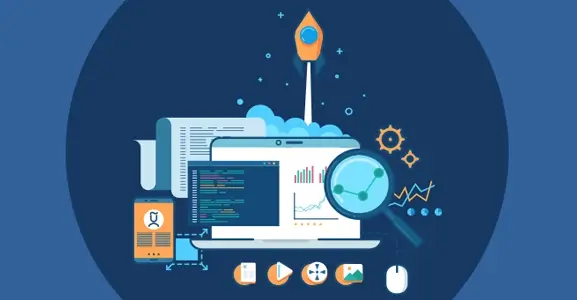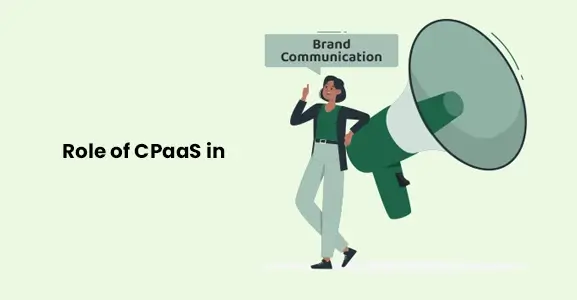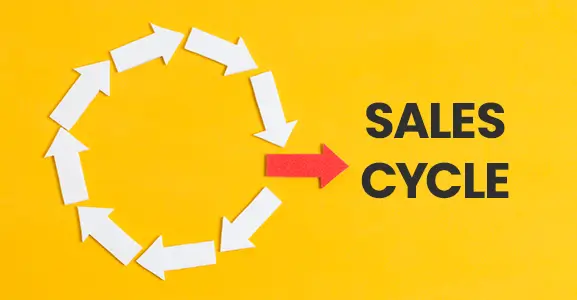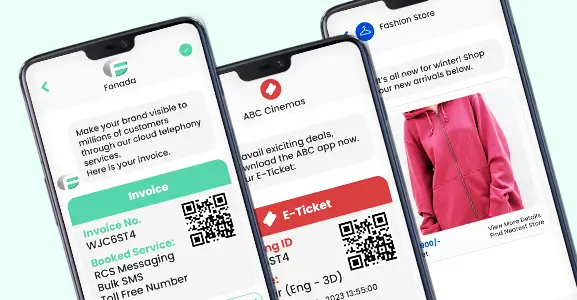The definition of a company’s sales cycle can vary greatly depending on several factors. It includes the type of business, the market position, and the types of customers. Due to this, they follow various procedures and activities leading up to the completion of the sale.
Companies with a systematic sales cycle process can see 18% greater revenue growth. The success of your sales force may depend on having well-defined sales cycle stages and goals.
What is a sales cycle? A sales cycle procedure is the path a potential customer takes from interest to purchase. To maximize earnings, the objective of every business is to reduce the cycle and finish the deal as rapidly as possible. How well you turn leads into sales is a good indicator of how well your sales cycle works, which means a better bottom line.
What Is The Definition Of A Sales Process?
A sales process is a set of salespeople’s procedures to convert an early-stage lead into a paying customer. Implementing an efficient sales process aids salespeople in improving their performance, converting more leads more quickly, and increasing revenue.
What is a sales cycle? The word “sales cycle” refers to the entire sales process, beginning with the initial customer interaction and continuing through closing the contract and follow-ups.
A repeatable sales process reduces friction and speeds up the sales cycle, improving client satisfaction. As described, it is the path a potential customer takes from realizing they need to get a product to making a purchase. Because the sales process is like a voyage for the prospect, it also serves as a road map for the salesperson.
=====================================================================
Read More: How To Increase Sales In Business To Create Your Success Story
=====================================================================
What Is The Importance Of The Sales Cycle?
The sales cycle is essential for the following factors:
1. Training Procedure Made Simple:
Setting up a sales cycle streamlines the process of training new sales representatives. If you have a well-defined sales cycle, it will be much easier to instruct new sales reps. These reps can learn your process with a planned roadmap.
2. The Right Way To Set Up A Team:
Also, knowing your sales cycle inside and out can help you organize your team in the most efficient way possible. After analyzing your sales cycle, you discover a lead follow-up bottleneck. You will need to reassign roles to your staff to ensure that adequate task is being performed at this stage.
3. Maintain An Eye On Team Performance:
Additionally, tracking your sales cycle allows you to assess your team’s success more accurately. If the average duration of the sales cycle reduces from month to month, it indicates that the business team is successfully closing leads in less time, which is excellent news. To evaluate how you compare to your competition, analyze your sales cycle length.
4. Better Communication:
A selling cycle lets you comprehend your consumers’ wants and how to approach them most effectively. It enables your sales team to “nurture” prospective consumers instead of overwhelming them with irrelevant data. According to Salesforce, 78% of corporate customers desire salespeople that function as trusted consultants with industry and needs expertise.
5. Streamlined Tasks:
Clear sales cycle processes reveal inefficiencies. A sales cycle assists your team in appropriately defining tasks, avoiding duplication of effort, and getting insight into where you can improve.
How Should A Sales Cycle Be Customised?
Your whole sales or business strategy should incorporate a sales cycle. Ensure that every stage of the selling process is planned. Customizing a selling process for your company requires the following steps and questions.
1. Make A List Of The Details Within Each Step
Examine each sales cycle stage and identify your company’s best practices. For team consistency, be specific.
2. Specify The Objective
Develop measurable business-specific objectives for each of the 7 sales process stages. It is necessary to measure your sales process to evaluate the success of each step.
3. Design A Visual Flowchart
A visual reminder will facilitate the onboarding process and refresh senior sales representatives throughout the sales cycle. Make the transition from one step to the next easier for viewers by using flowcharts and CRM workflows.
4. Look At Your Goals And Make Changes
After adopting the sales cycle, your business needs to be achieving goals. Analyze the metrics defined within every stage to ascertain the cause of the problem. Your optimum quarterly volume of quality leads may be too high, or an old CRM may need to be fixed.
=====================================================================
Read More: How To Improve Sales Performance By Solving Productivity Issues
=====================================================================
What Are The Seven Stages Of The Selling Process?
Here, we list the steps in the sales process. Make sure you know how to use these in the larger context of your sales lifecycle.
1. Prospect And Start Outreach
The sales cycle commences when your representatives begin prospecting. These prospects must progress through the selling process to become business clients.
This is the initial phase in which you determine your ideal consumer profile, discover prospective buyers, and initiate contact. Once you have a continuous stream of leads, you must begin contacting them. You need to contact your leads instantly. Inbound and outbound prospecting are the two primary categories of this business activity.
Inbound prospecting involves creating high-quality newsletters, seminars, and eBooks that require contact information. To download it, all that is required is the user’s email address. Once they enter, they are considered prospects.
Outbound prospecting involves making a set of available prospects, people, and businesses that could use your products or services and reaching out to them through cold outreach. The key to good prospecting is analyzing data to determine which specific approaches perform best for your business and focusing on them completely.
2. Get Qualified
In the second stage of closing a deal, leads are assessed to see whether they are a suitable match for your company if they need to be aggressively pursued and if they need to be maintained. Qualifying a lead is the next stage after making initial contact with them.
It is also crucial to determine whether you are working with a critical decision-maker. If your lead still seems like a good fit for your ICP and they seem like they could buy, then it’s time to conduct a discovery call to learn more about their specific requirements and pain points.
In an ideal scenario, you will be interacting with a sales-qualified lead (SQL) who is in a position to purchase. Premium-priced enterprises must know their leads’ budgets. You should save three months cultivating a lead before discovering that your prospect can’t afford to buy from your company.
3. Evaluate Needs
This sales process step expands on stage 2 and aims to thoroughly understand what a lead is searching for in a solution. If your customer is not immediately ready to purchase, begin nurturing them to progress them down the sales funnel gradually.
At this stage, your representatives will exclusively deal with qualified prospects who genuinely are fascinated with your brand. They must carefully examine the lead needs to pitch the proper product.
Stick with the right queries to identify each lead’s demands. Email campaigns can deliver these resources quickly. Additionally, you can target them with Google, Linkedin, and Facebook ads.
4. Make A Sale Of The Product
The success of your sales rep’s pitch will determine whether or not they are successful in closing the deal. In the presentation phase, the salesperson formally presents the product or service to the potential customer.
Given the time commitment involved, this phase of the sales process is usually reserved for more serious leads, highlighting the significance of the previous connecting and qualifying steps.
The key to pitching a product successfully is to make it very relevant and specific to each lead.
It is not a one-size-fits-all deal where a rep repeats the same pitch.
The basic components, such as the key benefits and quantitative facts, should be consistent between pitches; however, the specifics should be customized to each lead’s unique requirements.
That’s why salespeople must take notes on everything their leads tell them at the beginning so they can use it afterward to build the proper connections and deliver the right message.
5. Deal With Objection
Your sales representatives should never perceive lead objections as unanticipated curveballs that throw them off their game. If your lead thinks your product is too expensive, calculate its return on investment (ROI).
It’s better to plan for them and use them to your benefit to increase your number of conversions. In any case, the likelihood of a lead making a purchase skyrockets if a sales representative can effectively overcome obstacles and immediately alleviate their concerns. Due to its significance, handling objections effectively justifies a distinct stage of the selling process.
6. Get The Deal Completed
After addressing your lead’s objections, it is time to complete the deal. After completing the documentation and papers, proceed to ask the lead for the last inquiry. Determine the optimal timing for implementation. This strategy is known as direct.
The precise activities at this stage can differ from company to company but often entail the lead agreeing to a specific pricing plan and receiving approval from key decision-makers. The key to successfully navigating this sales process step is, once again, a systematic approach that your representatives can follow every time.
7. Follow Up
The final step of the selling process is for the sales representative to keep in touch with the customer to check that everything has gone smoothly and to build the relationship. Reps should ensure consumers receive their orders and help them migrate to the onboarding and customer service team.
This is a key part of building customer loyalty, and it can help you get valuable referrals in the future.
Improve The Efficiency Of Your Sales Cycle:
Whether or not your team has already achieved its sales targets, you should continually optimise your sales approaches and enhance the sales cycle. The following are some considerations to keep in mind:
1. Reduce Low-Value Work
Only 36% of a salesperson’s time is used making sales. The rest is used for paperwork and other administrative activities. To enhance your sales cycle, your staff can readily outsource their service duties and concentrate on sales.
2. Carefully Conduct Follow-Ups
Lead creation can take much work. As noted previously, most sales necessitate follow-ups before a contract is signed. Your salespeople must therefore develop the habit of persevering in their duties.
3. Request Minimal Time And Effort Commitments
Utilize a foot-in-the-door strategy to create a stronger relationship with your prospects. This method involves asking for small favors until they agree to complete the deal.
Start small. For example, when you email a client, ask for their phone number. And following a product demonstration, request to introduce the item to the purchasing team.
4. Make Use Of Social Proof
Case studies are ideally suited for use as social proof. To move closer to a sale, your staff should actively deliver them to potential customers. You can also answer your leads’ objections with case studies.
For example, they might worry that your product might need a long time to get used to. Use customer case studies to demonstrate how rapidly the product can be implemented.
5. Train Your Workforce
Ensure you create all the necessary sales materials to lead your staff through the sales cycle. Monitor the metrics of every team member. You may discover that specific employees experience problems throughout respective sales process stages. If so, provide them with additional resources and assistance from successful salespeople.
6. Add A Service Cycle To The Sales Cycle
To accommodate the increasing significance of customer service support, many businesses are beginning to integrate a service cycle into their existing sales cycle. The cycles must be matched up or synced in this particular scenario.
How Long Is The Sales Cycle?
Some companies’ sales cycles last days, weeks, months, or years. It depends on the industry, the number of individuals involved, the complexities of the transaction, market conditions, the effectiveness of your process, etc.
Here are some ideas:
A) Only Pursue Qualified Leads
It’s a waste of time and energy to pursue people who aren’t interested in you. In other words, you should only waste your time on a person or corporation if they have an issue that your service can solve.
B) Remove Barriers Immediately
People need help to make changes. They are frightened of what they don’t know, which includes you and your response. The customer’s need for the products or services is the first step in convincing them to buy from you. If you start this process early on, you can reduce how long it takes to close a deal.
C) Emphasise The Measurable Value
Customers must perceive and be able to quantify the value of your product or service. What specific ways would your services or products make their operations more efficient? How much can they anticipate an increase in productivity/sales/profits? The cycle will continue indefinitely if you need to know their answers.
The sales cycle process is a never-ending engagement loop through which interested potential clients are identified and cultivated all across the sales process. You will get more out of your marketing efforts if you assist both potential customers and customers you already have through each sale.
Wrapping Up
A complete sales cycle is incredibly beneficial since it arranges your activities so that you can always maintain an overview. It protects the planning process while also drawing attention to any flaws in the planning process.
A sales cycle shows how well you have reached your goals. And with it, you can easily monitor the progression of your sales funnel and the number of leads at each stage of the selling process.
FAQs
The sales cycle describes a series of steps a sales team takes to complete a deal. The sales cycle is a tried-and-true method for bringing in new business and satisfying existing customers. Salespeople and marketers can use this framework to develop more productive ways to make sales.
The following procedures can help you locate prospects, close sales, and keep customers for recurring business and recommendations.
Sales Procedures in 7 Easy Steps:
- Prospecting
- Preparation
- Approach
- Presentation
- Dealing with objections
- Closing
- Follow-up
Research, prospecting, the sales approach and close, and relationship building are the four main sales process stages. The number of sales process steps might vary by industry, product, and prospect.
Full-cycle sales representatives are responsible for every sales process step, from generating leads to closing deals to maintaining customer connections. Companies with a small customer base can benefit greatly from this strategy. Sales reps gain additional responsibilities as the business grows.
Sales management is the process through which a business achieves its sales objectives through strategic planning, control, budgeting, and leadership. Successful organizations use sales cycles to get the most out of their sales teams and achieve revenue targets.
According to a sales benchmark analysis, the average length of a B2B sales cycle is 102 days. Many businesses use this indicator to assess the overall effectiveness of their sales strategy. The shorter the length of the sales cycle, the better will result.
There are five basic types of sales.
- B2B sales (business-to-business sales)
- B2C sales (business-to-consumer sales)
- Enterprise sales
- SaaS sales
- Direct sales

Dec 11, 2024
Top Contact Center Optimization Tools For 2024
“A thriving business knows how to fetch maximum output from limited resources by optimizing ca... Read More
Nov 13, 2024
What Is Brand Communication? CPaaS Role Explained
Did you ever wonder why some advertisements grab your attention instantly, while others do not? The... Read More
Nov 01, 2024
What Is Automated Messaging And How Does It Work?
Automated messaging or text automation empowers businesses and marketing professionals to connect wi... Read MoreLatest Updates
From Fonada
Industry Insights, Trends, Innovations, Updates, and Case Studies from Industry Experts
View
Customer
Reviews
Discover why our customers love us - read their authentic and heartfelt reviews!
View
Case
Studies
Explore real-life scenarios, offering analysis, and solutions to practical challenges
View
Convert Leads Into Sales With Fonada
Trusted CPaaS Solution Provider








